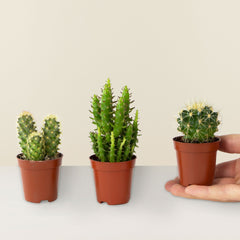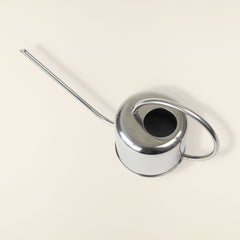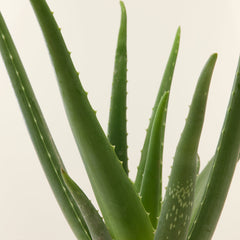Do you want to decorate your interior with pretty plants but don't have a green thumb at all? You don't know where to start and are afraid of not being able to make them last? Don't worry, most plants are not difficult to care for, the most important thing is to be patient and get to know and recognize their needs. To help you acquire the right gestures, we have prepared a guide for you with the best tips and advice for keeping your plants in perfect health!
Where to buy your plant ?
Sometimes it is difficult to know where to buy a plant so that it is completely healthy. At a florist, in a garden center or on the internet, a multitude of possibilities are available to you.
Seeing your plant before starting can seem reassuring. However, be particularly careful, because the plants sold at florists or in garden centers have often gone through many intermediaries and have not always received the care adapted to their needs. Remember to check that the soil is neither too dry nor too wet, that the roots do not protrude from the pot and that the foliage is in perfect health (no disease or insects).
Also be careful when buying online. Indeed, many florists and nurseries sell their plants online without reducing the number of intermediaries. So prefer a site that sends directly from the producer's greenhouse so that your plants always evolve in optimal conditions and arrive at your home in good shape, ready to flourish.
Potting your plant:
Most plants are sold in plastic pots or in decorative pots. The most important thing is to check that they have drainage holes on the bottom. Indeed, these are essential to allow the water to evacuate and the roots of your plant to breathe. If this is not the case, be sure to quickly repot your plant in a new pot. Also remember to install a saucer under it so that you can collect and empty the excess watering. Be aware that pots without a drainage system can be used as decorative planters in which you can place your pot with holes and thus allow water to drain away.
Where should you place your plant?
In order to find the ideal place for your plant, you must consider several criteria: light, temperature and humidity. To do this, rely on its original environment and try as much as possible to reproduce its conditions.
Brightness :
Plants draw their energy from light, which is why it is important to position them correctly. Most like good light, but can't stand direct sunlight. This is the case of tropical plants growing in the shelter of large trees in their natural environment. On the contrary, fruit trees such as the olive tree, the calamondin or the lemon tree need direct light to fully flourish and produce fruit.
Temperature :
Most plants are particularly fond of the climate of our interiors (between 15 and 25°C). Some, like the olive tree, the cactus or the hemp palm are more resistant to cold and can tolerate temperatures close to 0°C.
Cooler temperatures at night are also beneficial and allow plants to flower in particular. Above all, be sure to keep your plants away from heating, air conditioning or drafts that could greatly damage them.
Humidity :
Succulents and cacti, accustomed to arid climates, tolerate dry air very well. However, this is not the case with most plants which often need a high level of humidity! This criterion is all the more important in winter when the heating dries the air in our interiors.
It is therefore wise to place your most sensitive plants in a kitchen or a bathroom where the atmosphere is naturally more humid.
If this location does not suit you, here are some techniques to increase the relative humidity of their environment:
- Spray your plants : regularly spray non-calcareous water (rainwater) on the leaves of your plants to create humidity. Be careful, this technique only acts on the short term and must be repeated very often to be effective.
- Create a humidifying tray : spread gravel on a tray where you will place your plant. Regularly pour water into it so that the base of the stones is submerged. By evaporating, the water will increase the ambient humidity level.
- Group your plants : plants naturally give off moisture. By grouping them, each can benefit from the humidity created by the others.
- Use a humidifier : you can also use an air humidifier. These are very effective and easy to use.
How to water your plant?
Improper watering can quickly be fatal to your plant, which is why it is very important to know how to do it, how often and in what quantity.
Every plant is different when it comes to its water needs. Succulents, for example, require very little and can quickly rot if overwatered. On the contrary, tropical plants like calatheas like constantly moist soil. Remember that these needs also vary depending on the season and that watering must often be reduced during the winter period. Understanding the needs of your plant is therefore essential to water it correctly.
To help you, here are some tips valid for all plants:
- Water the soil and not the leaves : it is very important not to pour water on the leaves of the plants, as this could encourage insect attacks. If your plant's foliage is very thick, you can water it from below: fill its cup with water and let it drink for about 30 minutes before removing the excess. Orchids, on the other hand, like to take baths of about 15 minutes each week.
- Use non-calcareous water at room temperature : some plants are very sensitive to the chemicals and limestone found in our taps. You can use rainwater or add a few drops of vinegar to your watering can. Too cold or too hot water could also shock your plant, so check its temperature before watering.
- Water evenly and thoroughly : it is important to water the soil all around your plant until the water comes out of the drainage holes. Indeed, if you only water the soil on one side, the roots will only grow in that direction.
- Remove excess water : once watering is finished, wait about thirty minutes then empty the excess water from your plant's cup.
How to feed your plant?
The supply of fertilizer is very important for the development of your plant. As with watering, each has different needs. However, the contribution will always be made during its growth period, that is to say in spring and summer for most plants (the fertilizer can be used in winter to feed plants that flower during this period). ).
Choose a liquid fertilizer suitable for the variety of your plant and follow the instructions on the container. One intake per month is usually sufficient. Make sure the potting soil is moist when you feed your plant so that the fertilizer reaches the roots and does not flow directly into the dish.
Be careful not to overfeed your plant as this could damage it.
How to repot your plant?
Repotting is important both to allow the roots of your plant to continue to develop, but also to renew the organic matter present in the soil.
To find out if your plant needs repotting, tap the bottom of your pot and lay it down, hold the base of the stems in one hand and gently pull the pot out with the other. If many roots are apparent, it is time to repot it. Roots coming out of drainage holes can also be a good indicator.
Repotting is usually done in early spring, when your plant is at the end of its vegetative rest. Choose a slightly larger pot (2-3 cm in diameter more), line the bottom with clay balls and add a little potting soil suitable for your plant. Then position it in the center of the pot and fill it, making sure to leave about 2 cm of space on the surface of the pot to facilitate watering. All you have to do is water well and enjoy!
Other tips:
- Clean your plant : Remember to remove the dust from the leaves of your plant! Indeed, the latter creates a sort of screen, preventing the leaves from properly capturing the light. Use a damp cloth and gently rub its foliage.
- Give it a nice cut : You can remove dry leaves and dead flowers with clean pruning shears. This will allow your plant to focus all of its energy into new growth.
- Inspect frequently : If you find that your plant is not doing very well, inspect its leaves for insects or signs of disease.
By following all these tips, you will become a real expert and your plants will do wonderfully!
Do not hesitate to take a look at our maintenance sheets for more specific advice and to ask us questions via the chat available on our site.





